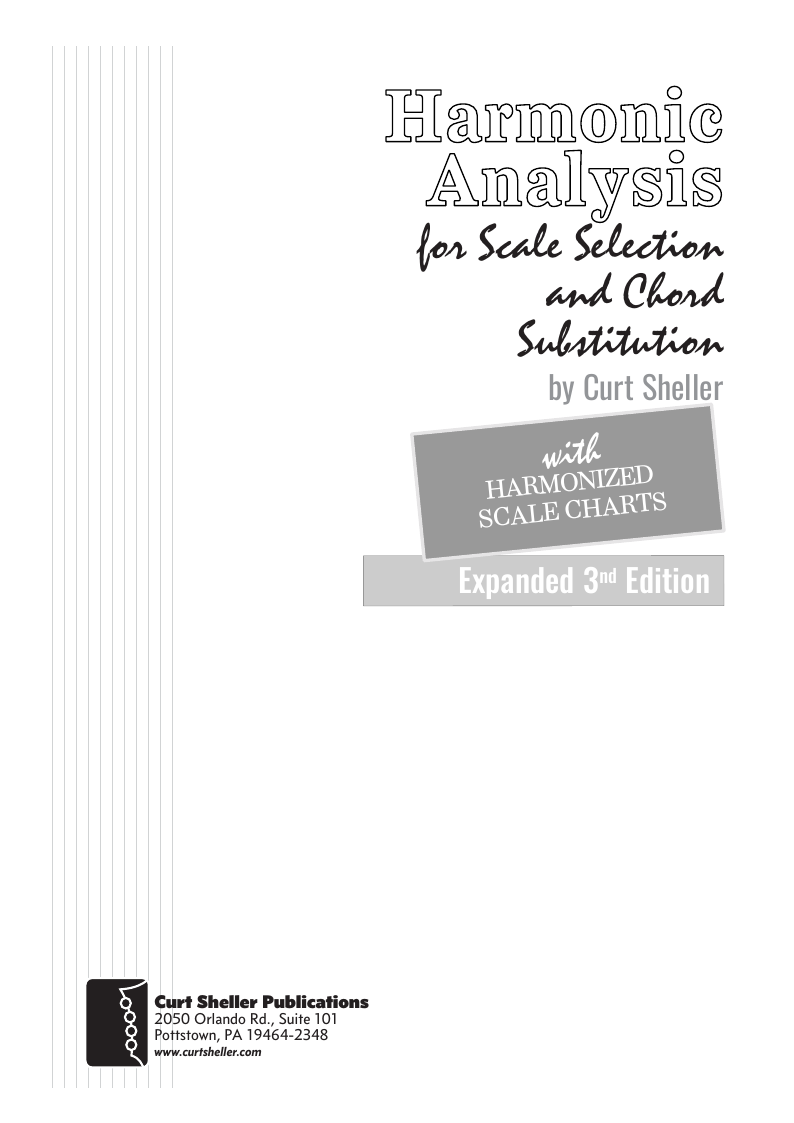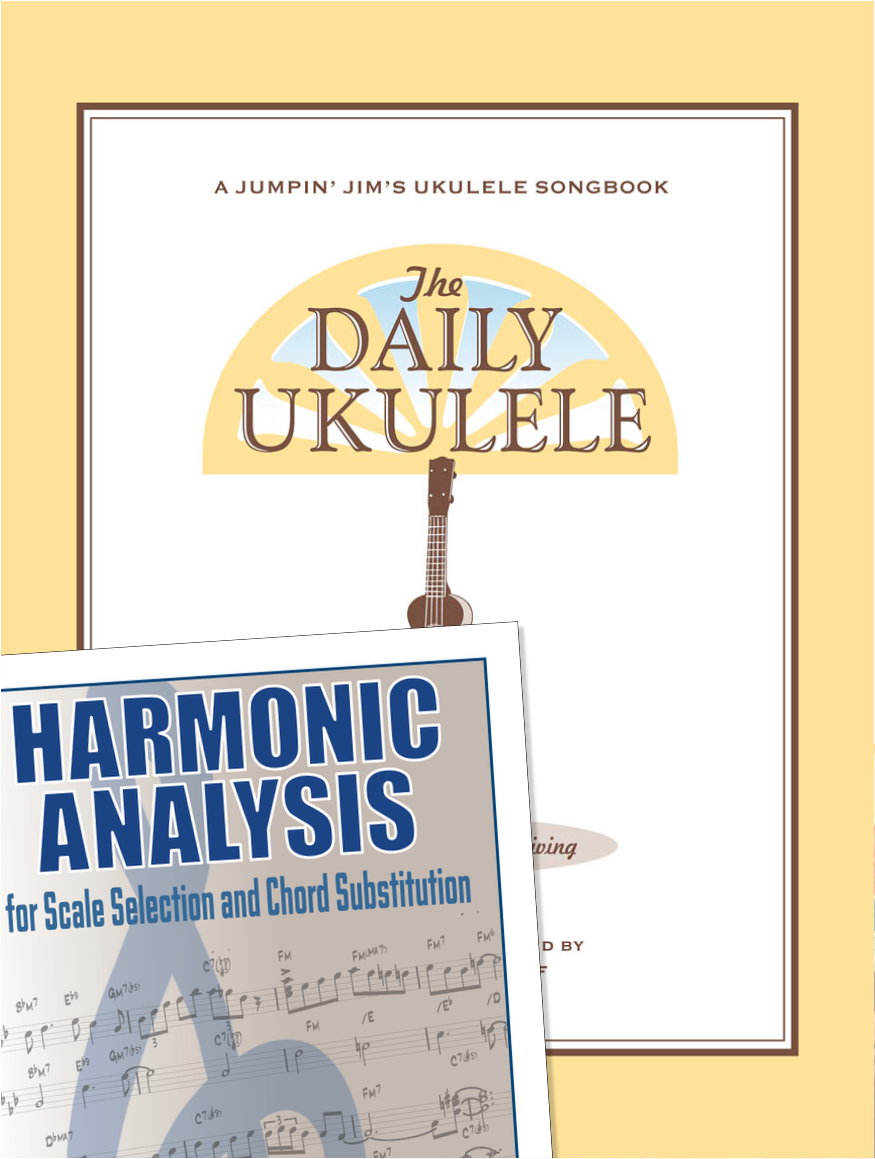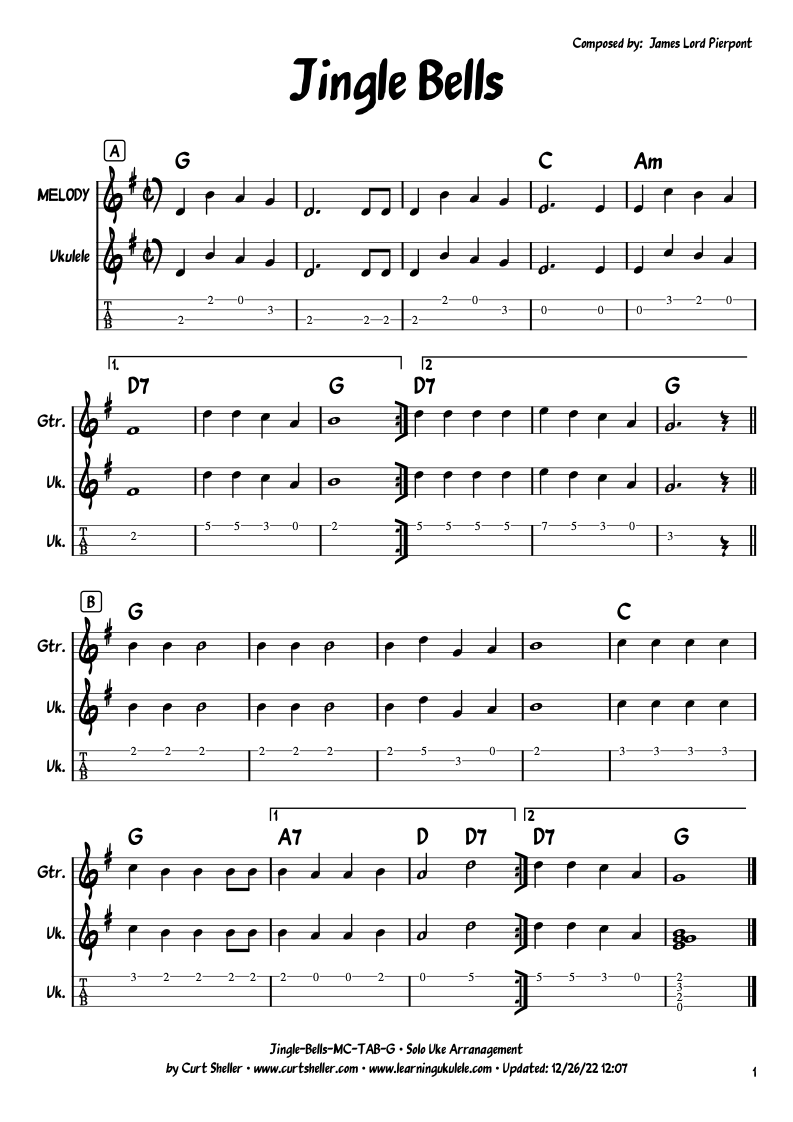Harmonic Analysis (RMA) Worksheet for the song: "Jingle Bell Rock".
Harmonic Analysis (RMA) Worksheet for the song: Jingle Bell Rock.
Jingle Bell Rock is an American Christmas song first released by Bobby Helms in 1957. It has received frequent airplay in the United States during every Christmas season since then, and is generally considered Helms' signature song. "Jingle Bell Rock" was composed by Joseph Carleton Beal (1900–1967) and James Ross Boothe (1917–1976), although both Helms and session guitarist on the song Hank Garland disputed this (see Authorship controversy section below). Beal was a Massachusetts-born public relations professional and longtime resident of South Ocean Avenue in Atlantic City, New Jersey, and Boothe was an American writer in the advertising business. (wikiwand);

The Daily Ukulele— 365 Songs for Better Living book.














II7
( V of V)
I7
( V of IV)
II7
( V of V)
II7
( V of V)
Or you can think of it as an Unresolved II V in D Major
A Harmonic Analysis (RMA/HA) and its worksheet are intended to show the function of the chords, the harmonic principles used, the keys and tonalities the song explores. And, can be used for scale selections and chord and scale substitutions.
lead leadsheet.Minimal roadmap information such as repeats, fine, D.S., D.C., and codas has been used in preparing the worksheets to somewhat mirror the leadsheet in the Daily Ukulele book.
Yellow Book. You should start to recognize that 1st endings typically always return to a previous verse or an
 section. With a 2nd ending, a transition to a different part of the song, a
section. With a 2nd ending, a transition to a different part of the song, a  or chorus. Harmonic Principles are used for these repeats and transitions.
or chorus. Harmonic Principles are used for these repeats and transitions.- Jingle Bell Rock is in 4/4, Common Time and the Key of G . Original Key: D, 120 bpm.

- Full Diatonic
- Partial Diatonic • Full Diatonic includes Secondary Dominant chords
- Unresolved
- Chromatic

Contemporary Scales: Minor Pent: Minor Pentatonic, Pent: Major Pentatonic, Blues,
Scale/Mode Names: Ion: Ionian (Major), Dor: Dorian (Minor), Phrygian: Phrygian, Lyd: Lydian, Mix: Mixolydian (Dominant), Aeol: Aeolian (Natural Minor), Loc: Locrian



C Tuning, Low or High G
C Tuning, Low or High G
To play this Into as written and handle the
B
in measures 2 and 4 a Low G
, C Tuning in needed. For High G
— What's one note, go for it and It will be OK ;-)
Related Lessons, Videos, Lesson Series, Songs, Books & Reference Charts, Resources & Assets, Workshops are below.

Harmonic Analysis ( HA ) is the process used to determine the harmonic function of chords within a chord progression. A chord progression is defined as a sequence of chords, each chord has a root and has a particular chord type. The relationship of a chord's root to a scale determines its function within that scale's tonality. Once a chord's function is identified, scale selections along with chord and scale substitutions can be made. This process is called Root Movement Analysis ( RMA ). This series of lessons are extracted from my book for use with individual private and on-line students. Each lesson directly corresponds the chapters in my book Harmonic Analysis for Scale Selection and Chord Substitution by Curt Sheller (me).

Harmonic Analysis (HA), also known as the study of chord relationships, is the method used to identify the harmonic role of chords within a chord progression or song. A chord progression refers to a sequence of chords, with each chord having a root note and belonging to a specific chord type. The function of a chord within a particular scale's tonality is determined by its relationship to that scale.

Rockin' Around the Christmas Tree is a Christmas song written by Johnny Marks and recorded by Brenda Lee in 1958 on Decca. Despite her mature-sounding voice, Lee recorded this song when she was only thirteen years old. The song's declaration of a rock and roll sound notwithstanding, its instrumentation also fits the country music genre, which Brenda Lee more fully embraced as her career evolved. The recording features Grady Martin's ringing guitar and Boots Randolph's swinging solo sax break. The song is written in the key of A-flat major.








.jpg)